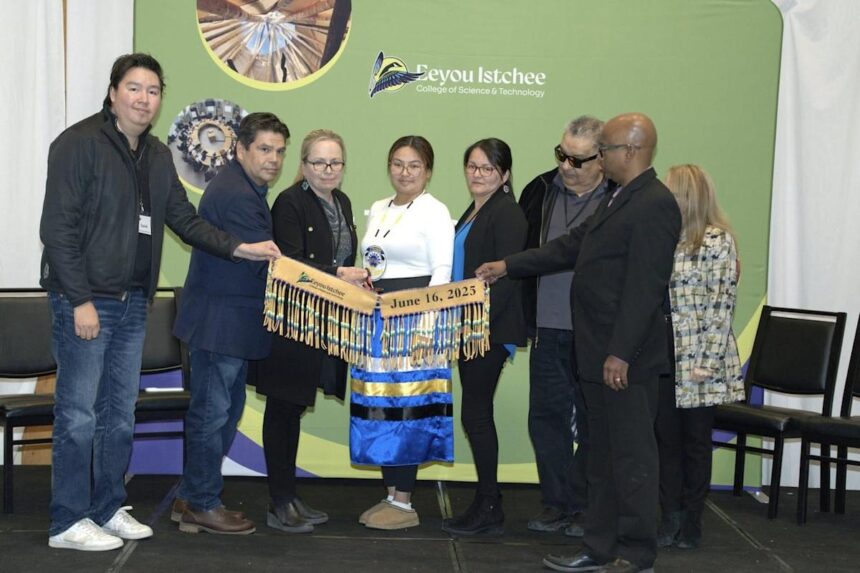In the snow-swept reaches of Quebec’s north, a groundbreaking educational institution is quietly transforming the future for Indigenous youth. The Cree School Board’s post-secondary institution, Sabtuan Regional Vocational Training Centre, has emerged as a beacon of hope and cultural preservation for communities long underserved by conventional education systems.
Walking through the centre’s hallways in Waswanipi, about 700 kilometers north of Montreal, you immediately sense something different. Here, education doesn’t require students to leave their culture at the door – it celebrates it.
“What we’re doing isn’t just about job training. It’s about healing, about reconnecting our young people with who they are while giving them the tools to thrive in today’s economy,” explains Sarah Pash, chairperson of the Cree School Board, during a community gathering last month.
The centre offers programs tailored to both regional employment needs and cultural priorities. Students can pursue certifications in areas ranging from carpentry to healthcare, all while maintaining connection to language, land, and traditions that define Cree identity.
Statistics Canada reports that only 43 percent of Indigenous peoples living on reserves have post-secondary qualifications, compared to 61 percent of non-Indigenous Canadians. This education gap has persisted for generations, but institutions like the Sabtuan centre are working to change that narrative.
What makes this approach particularly effective is its grounding in community needs. Rather than imposing external educational models, the curriculum was developed through extensive consultation with elders, employers, and young people themselves.
“I never thought I could become a carpenter without leaving my community and my family,” says Jacob Etapp, a recent graduate now working on a housing project in his home community. “Here, I learned not just the trade, but how our ancestors approached building. I’m carrying that forward.”
The Quebec government has recognized the centre’s innovative approach, providing $10.4 million in additional funding last year to expand programming. This represents a shift in how provincial authorities view Indigenous education – moving from assimilation toward empowerment.
Yet challenges remain. The legacy of residential schools continues to cast a long shadow over educational institutions in Indigenous communities. Building trust takes time, especially when many parents and grandparents experienced profound trauma in educational settings.
“We acknowledge that history every day,” says Director of Education Mark Rodgers. “That’s why everything we do starts with the question: does this respect who our students are as Cree people?”
The centre’s approach appears to be working. Enrollment has increased by 32 percent over the past three years, with retention rates significantly higher than provincial averages for Indigenous students. Perhaps more telling are the stories from graduates who have returned to strengthen their communities.
Melissa Neeposh completed the centre’s nursing assistant program last year and now works at the local health clinic. “When elders come in and can speak to someone in Cree about their health concerns, you see the relief on their faces,” she tells me during a community healthcare initiative. “That connection matters as much as the medical knowledge.”
Beyond vocational training, the centre has introduced innovative programs that blend traditional knowledge with contemporary skills. A partnership with McGill University allows students to begin post-secondary studies locally before transitioning to Montreal campuses if they choose.
The Grand Council of the Crees has championed the institution’s expansion as part of broader self-governance efforts. Under the James Bay and Northern Quebec Agreement, the Cree Nation has gradually assumed greater control over education, healthcare, and economic development.
“This is what implementing the UN Declaration on the Rights of Indigenous Peoples looks like in practice,” notes Grand Chief Mandy Gull-Masty. “Education designed by and for Indigenous peoples, respecting our right to preserve our languages and prepare our youth for success however we define it.”
The centre’s impact extends beyond individual students. Local businesses increasingly partner with training programs, creating pathways to employment in a region where opportunities have historically been limited. Mining companies, healthcare facilities, and construction firms now recruit directly from the student body.
While the model is proving successful, educators are clear-eyed about the work ahead. Housing shortages in northern communities make it difficult for some students to attend. Internet connectivity – essential for accessing certain resources – remains inconsistent. And the psychological wounds from generations of educational trauma require ongoing healing.
What makes this institution remarkable isn’t just its academic offerings, but its commitment to becoming part of the community fabric. Seasonal ceremonies, community feasts, and family involvement aren’t extracurricular – they’re fundamental to how education happens here.
As federal and provincial governments face increasing pressure to advance reconciliation efforts, the Sabtuan centre offers a working example of education that honors Indigenous sovereignty while opening doors to opportunity.
For the young people walking its hallways, it represents something profound: the chance to move forward without leaving themselves behind.






